Parka linked its firm values to the design of its Quebec City offices.
Wanting to create an employee-centric office, PARKA – Architecture & Design fashioned an office with a black-and-white color palette that fosters collaboration and creativity. The office fills 2,800 square feet of the former Alfred-Eugène Marois’ shoe factory, which was built in 1914 and designed by Architect René-Pamphile Lemay. Drawing on his industrial-style architecture, the concept of the Parka office space is simple and the workstations are laid out in an open-space ambience. Quiet zones and meeting rooms have been designed to provide employees a variety of environments to work, coordinate and get together.
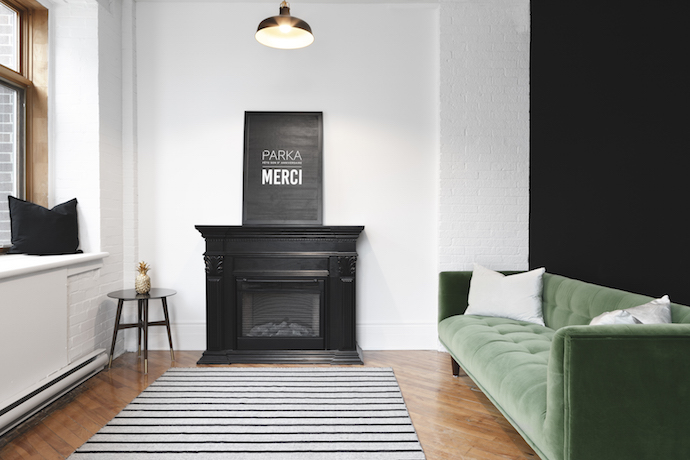
When was the project completed?
2017
How much space?
2,800 SF
Was this new or renovated space?
Renovated space
SF per person?
215 SF per employee
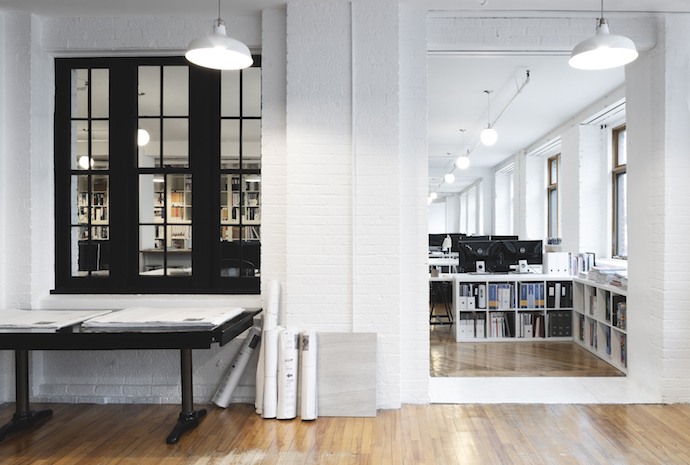
How many employees?
10-12 employees
What is average daily population?
9-11 employees
Describe workspace types.
Open work space with closed meeting rooms
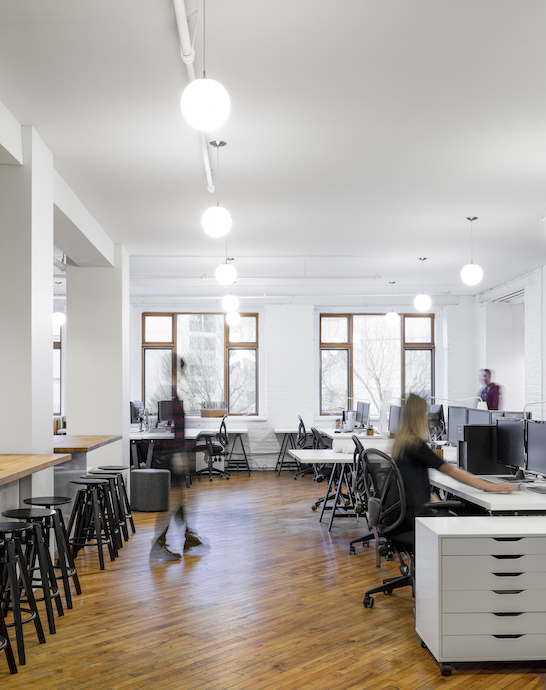
What kind of meeting spaces are provided?
There are three meeting spaces in the office:
- A formal meeting room (conference room), which includes technology (tv, computer, projector) for client meetings
- An informal meeting room/lounge, which is used to provide a quiet zone for employees (for calls, focus work and small team meetings)
- A kitchenette/dining room, used for lunch breaks, big team meetings and happy hours
What other kind of support space or amenity spaces are provided?
- A reception area
- A locker room, which also provides space for the computer server
- A materials library and a stationery space, used for meetings with representatives and to store all the different samples of products
- Two separated washrooms
What is the project’s location and proximity to public transportation and/or other amenities?
The office is located in Quebec city’s downtown, close to Université Laval’s design pavilion. There are lots of restaurant, bars and businesses nearby. It is also closed to public transportation and highways.
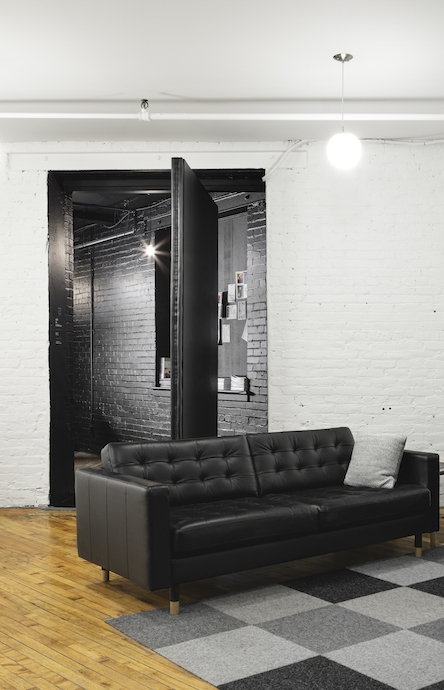
Was the C-suite involved in the project planning and design process? If so, how?
We tend to minimize hierarchy levels inside the company, but the owner of the office mainly did the layout and the design. Nevertheless, he made sure to consult the team several times throughout the process.
What kind of programming or visioning activities were used?
We kept it pretty simple, using mainly CAD plans and material samples. Since we are an architecture firm, we could easily understand the potential of the space with those simple tools.
Were any pre-planning surveys conducted to get employee input?
It wasn’t necessary to survey the employees because everybody had the same needs and also because we tend to talk openly on a regular basis about our needs at the office.
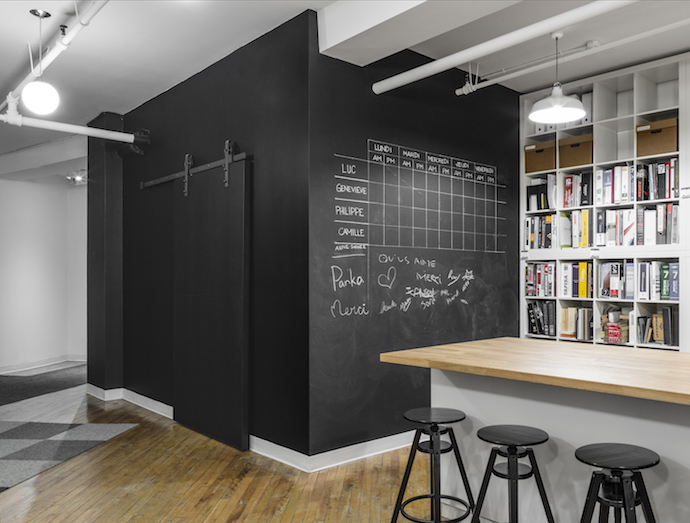
Were there any other kind of employee engagement activities?
The employees were involved in choosing some elements of the layout (color of the walls and furniture, among other elements) and some also participated in the computer drawings and in managing the submissions.
Were any change management initiatives employed?
There weren’t any change management initiatives employed, as the current office could be used during the renovations and the expansion. Luc Bélanger, the lead architect, just made sure to follow up with the employees every week. The structure of the team and work methodologies were not modified by the project.
Was there any emphasis or requirements on programming for health and wellbeing initiatives for employees?
As the team expanded rapidly, it was necessary to expand the space to provide more workstations, several meeting and storage areas, and a bigger dining space, so the employees could gather and eat together instead of in front of their computers.
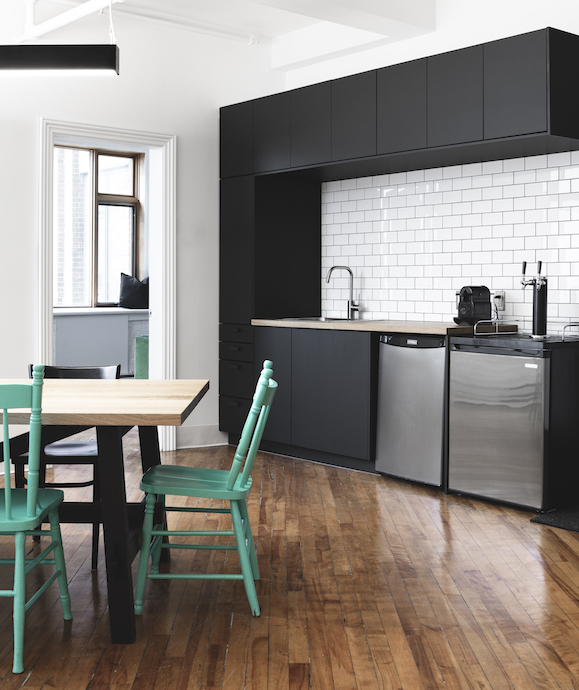
Were there any special or unusual construction materials or techniques employed in the project?
The office had already great features that we wanted to keep (brick wall, old windows, etc.) so we used simple materials that helped us to respect a tight budget.
What products or service solutions are making the biggest impact in your space?
The desks we have chosen are mainly boards on trestles, so we can modify the layout easily if needed. We are conscious that we might add new members in the future.

What kind of branding elements were incorporated into the design?
As the firm regularly uses black, white and wood materials in its architectural projects, the office needed to reflect this style (white painted walls, white furniture, black elements and wood floor). Some inspirational quotes and wayfinding designs are found on the walls and PARKA’s logo is displayed on the main door and on the wall of the reception.
What is the most unique feature of the new space?
The homemade swing door of the main meeting room.
Are there any furnishings or spaces specifically included to promote wellness/wellbeing?
Each workstation is in L shape and includes two computer screens, a lamp, a comfortable chair and a file cabinet.
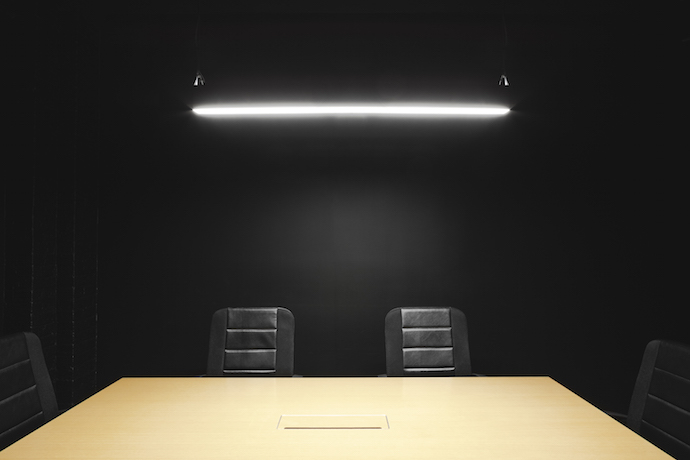
How did the company communicate about the changes and moves?
As the team expanded rapidly, it was necessary to expand the space to provide more workstations, several meeting and storage areas, so there was no big surprise for the team.
What part of the design did the team get most excited about?
Everybody was pretty stoked about having a proper dining and kitchen area.


